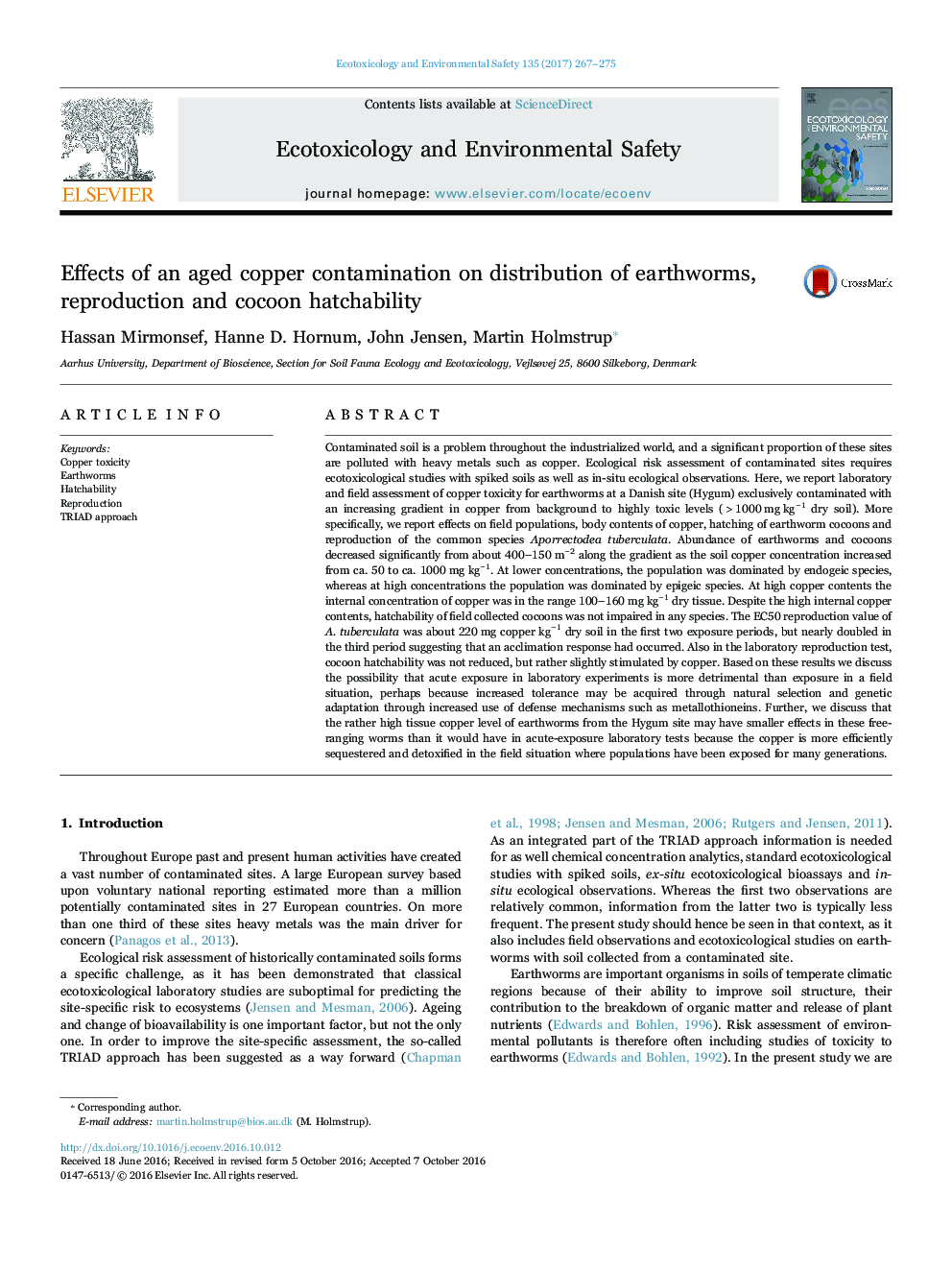| کد مقاله | کد نشریه | سال انتشار | مقاله انگلیسی | نسخه تمام متن |
|---|---|---|---|---|
| 4418980 | 1618929 | 2017 | 9 صفحه PDF | دانلود رایگان |
• Abundance of earthworms and cocoons decreased significantly along a copper gradient.
• Internal concentration of copper reached 100–160 mg kg−1 in the most copper polluted soil.
• Hatchability of field collected cocoons was not impaired by copper in any species.
• Increased tolerance may be acquired through natural selection and genetic adaptation.
Contaminated soil is a problem throughout the industrialized world, and a significant proportion of these sites are polluted with heavy metals such as copper. Ecological risk assessment of contaminated sites requires ecotoxicological studies with spiked soils as well as in-situ ecological observations. Here, we report laboratory and field assessment of copper toxicity for earthworms at a Danish site (Hygum) exclusively contaminated with an increasing gradient in copper from background to highly toxic levels (>1000 mg kg−1 dry soil). More specifically, we report effects on field populations, body contents of copper, hatching of earthworm cocoons and reproduction of the common species Aporrectodea tuberculata. Abundance of earthworms and cocoons decreased significantly from about 400–150 m−2 along the gradient as the soil copper concentration increased from ca. 50 to ca. 1000 mg kg−1. At lower concentrations, the population was dominated by endogeic species, whereas at high concentrations the population was dominated by epigeic species. At high copper contents the internal concentration of copper was in the range 100–160 mg kg−1 dry tissue. Despite the high internal copper contents, hatchability of field collected cocoons was not impaired in any species. The EC50 reproduction value of A. tuberculata was about 220 mg copper kg−1 dry soil in the first two exposure periods, but nearly doubled in the third period suggesting that an acclimation response had occurred. Also in the laboratory reproduction test, cocoon hatchability was not reduced, but rather slightly stimulated by copper. Based on these results we discuss the possibility that acute exposure in laboratory experiments is more detrimental than exposure in a field situation, perhaps because increased tolerance may be acquired through natural selection and genetic adaptation through increased use of defense mechanisms such as metallothioneins. Further, we discuss that the rather high tissue copper level of earthworms from the Hygum site may have smaller effects in these free-ranging worms than it would have in acute-exposure laboratory tests because the copper is more efficiently sequestered and detoxified in the field situation where populations have been exposed for many generations.
Journal: Ecotoxicology and Environmental Safety - Volume 135, January 2017, Pages 267–275
